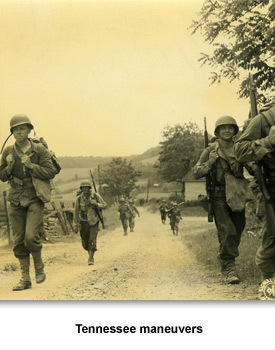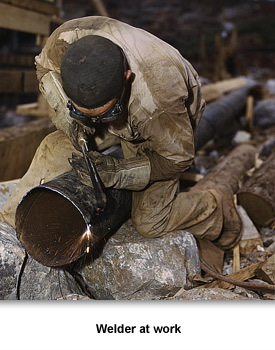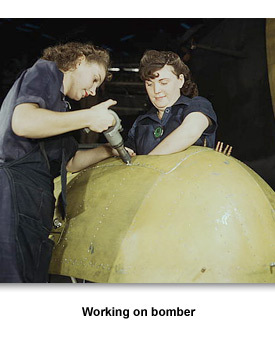The Great Depression & WW II
Working for the War
Many people on the Tennessee homefront helped the U.S. war effort through their jobs.
During the war, companies changed what they usually produced so that they could make supplies for the military. Some companies built new factories or expanded old ones.
American workers made military goods for U.S. soldiers. They also provided supplies for other Allied nations like Great Britain and the Soviet Union. The United States’ role as a powerhouse of industrial production helped the Allies fight and win the war.
U.S. industry also helped develop new products. Rubber supplies fell drastically as Japan seized rubber plantations in the East Indies. U.S. scientists began researching ways to produce synthetic rubber. By 1944, the U.S. was producing 87 percent of its rubber needs through its synthetic rubber industry.
As the government mobilized for the war, they set ambitious goals—most of which they met. In 1942, U.S. businesses built 60,000 airplanes, 45,000 tanks, and 20,000 anti-aircraft guns. They raised the goals even higher the next year, doubling the number of planes and tanks. By the end of the war, the U.S. had produced 300,000 aircraft, 100,000 tanks, and 15 million guns.
As increasing numbers of men joined the armed forces, workers became scarce in Tennessee. This created new opportunities for women. They began to be hired for higher paying jobs formerly considered men’s work. African American civilians also made some gains in the job market. However, segregation and racial discrimination in hiring workers limited their advancement.
A secret base and city was built in Oak Ridge, Tennessee. For awhile even the governor didn’t know what the federal government was building there. State officials did know about the many other military bases that were built in the state during the war.
World War II was a good time for workers on the Tennessee homefront. Jobs were plentiful. Wages rose for workers in general. Although people worked long hours, overtime pay increased their earnings. Workers were a vital part of the war effort. Their work benefited the war effort and their families.
Picture Credits:
- The "We Can Do It" poster by the War Production Co-Ordinating Committee promoting the idea that women can take the place of male industry workers. This poster, created by J. Howard Miller, is one of the best-known posters from World War II. Sometimes called the "Rosie the Riveter" poster, it has been reproduced on tee shirts and posters in recent times. National Archives
- A welder works on a pipe at TVA's Douglas Dam in Sevier County in June 1942. U.S. Office of War Information collection, Library of Congress
- Two women working on a "Vengeance" dive bomber at Vultee Aircraft in Nashville. The photograph is dated February 1943. U.S. Office of War Information Collection, Library of Congress
- A soldier walks down the road in Tennessee during large scale training maneuvers held in Tennessee during the war. Albert Gore Sr. Research Center, Volunteer Voices, Digital Library, University of Tennessee Knoxville
The Great Depression & WW II >> World War II >> Working for the War >>




 Sponsored by: National Endowment for the Humanities
Sponsored by: National Endowment for the Humanities